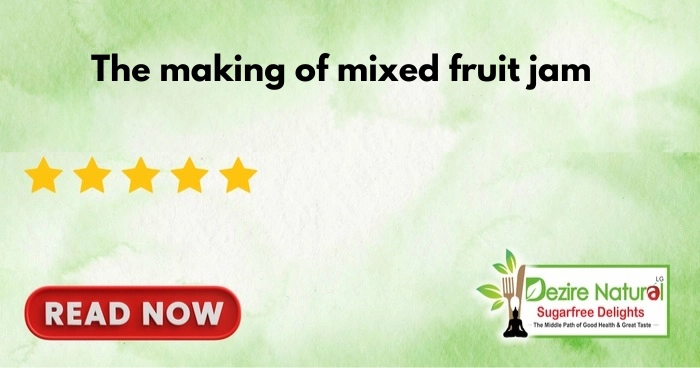Fruit pulp, concentrated fruit juice, dry fruit, or fruit juices are the ingredients of jam. These fruit pieces, together with the pulp or juice, are cooked with sweeteners (sugar, dextrose, invert sugar, or liquid glucose) until the proper concentration is reached. It can be made by using a single fruit or by putting parts of many fruits together. A fully prepared jam will retain the characteristics of the fruit(s) used in production and be free of crystallized sugar and any extra burnt or unwanted flavor.
Jam is made for both personal use at home and business purposes. Two processes are used by food industry companies to create commercially prepared jam. One is the "Pan method," which yields a typical flavor; the other involves producing enormous quantities of food with vacuum equipment. Companies in the food business and recipe developers ought to create a delectable fruit jam.
Procedure for making mixed fruit jam:
1. 1. Inspection
The picking of ripe fruits is the initial stage in the making of jam. These fruits are hand-selected and divided into groups according to color, scent, and appearance. Fruits that are rotten or broken are removed.
2. Washing
Next, chosen fruits are cleaned in water with 200 parts per million of chlorine. Temperature and pH levels are maintained. In industry, spray washers are used to prevent fruit damage, rather than using forceful water.
3. Peeling
Fruits are peeled by hand by the small-scale producers, in general. Additionally, a machine with blades is employed for large-scale manufacturing. Certain fruits can be pulped without needing to be peeled.
4. Pulping
Pulping is used to remove the seeds and core portion. There are many different kinds of fruit-processing machines on the market. The blades of these machines can be changed to the proper size and quantity of material that has to be pulped.
5. Addition of sugar
The processed fruit pulp is mixed with sugar and pectin in the appropriate amounts, as recommended by recipe creation services. The concentration can be lowered by adding water. When sugar is added, the water molecules are bound together and the pectin chains are released, forming a network.
The recipe development consultants suggest that adding more pectin will make the jam harder, while adding more sugar will make the jam stickier.
6. Boiling
Boiling is a crucial phase in the jam-making process that requires extra patience.The concoction that was made was kept on fire. After a few minutes, the sugar begins to dissolve, and a fruity scent that smells like pectin fills the room.
A foamy scum that forms on top of the layer during this process can be scraped with a spoon while the mixture cools, or butter can be added at this stage to reduce surface tension.
7. Addition of citric acid
While boiling, the necessary quantity of citric acid is added. To guarantee that the jam is properly set, the heating temperature is kept at 105 C, or 68–70% TSS. The purpose of the test is to investigate the history of the jam sheet.
A little bit of jam is heated for a short while before being allowed to drop off a spoon. If the jam flakes or drops, it is perfectly prepared; if not, it needs to be cooked for a little while longer.
8. Filling into bottles
The bottles are first disinfected and then filled with hot jam. The heated bottles are then cooled in a water bath. Following the application of paraffin wax or another wax, metal caps are vacuum-capped to the bottle.
9. Storage
Now that the jam has been bottled, it is time to preserve it. preserve it somewhere cool, dry, and shaded from the sun. Jams in bottles keep for at least a year on the shelf. The food development sector has to thoroughly verify this.
Conclusion
There are several varieties of jam on the market that can elevate even your monotonous morning meal to a delightful experience. A good combination of sugar and appropriate fruits will create a delicious jam. Because customers are growing more health conscious and interested in consuming less sugar, food companies should focus their new product development efforts on developing fresh fruit jams with a reduced sugar content. Furthermore, it is possible to optimize processing parameters in order to preserve its sensory qualities.

